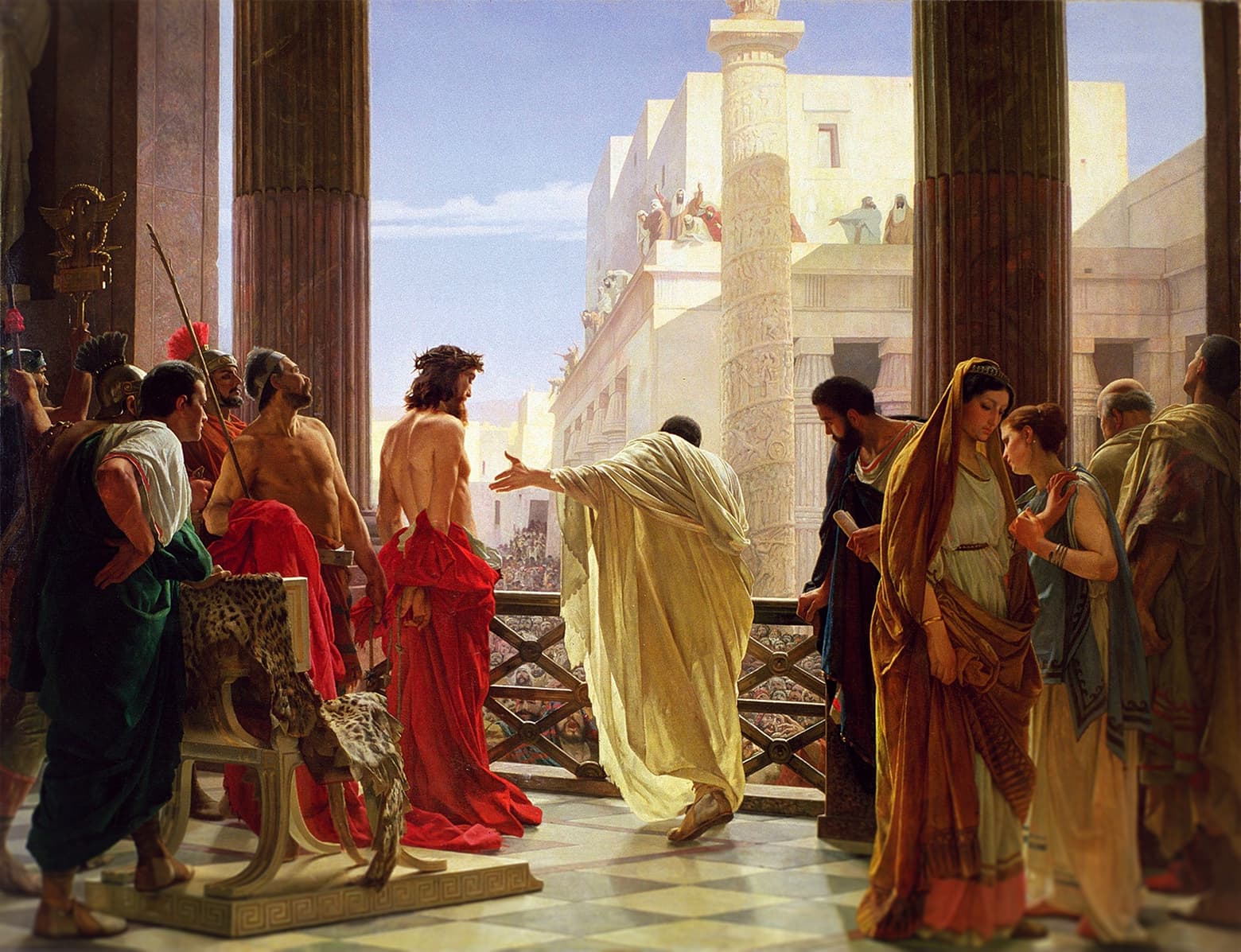Discover Jesus \ Object \Praetorium
Tag
Praetorium
The praetorium, originally a Roman general's tent, evolved into a governor's luxurious palace. In Jerusalem, the praetorium served as Pontius Pilate's headquarters and the site of Jesus' trial during Passover in 30 CE.

Table of Contents
Summary
Praetorium is a Latin word translated as "common hall," "governor's house," and "judgment hall." Initially, a praetorium was a command tent where a high Roman official stayed. Later, praetoria became luxurious palaces for regional governors and their guards who ruled their part of the far-flung Roman empire.
The praetorium in Jerusalem is where the trial of Jesus was enacted. Jerusalem was under Roman jurisdiction, ruled by Pontius Pilate, governor of Judea, Idumea, and Samaria. Pilate and his wife made their headquarters at this praetorium during the Jewish holiday of Passover, and it was then and there that Pilate presided over Jesus’ infamous trial in 30 CE.
Jesus’ Trial at the Praetorium
The Jerusalem praetorium was a palace built by Herod the Great, a regional governor. Herod died in 4 BCE, and Pontius Pilate was later appointed to govern the region. This praetorium was, in fact, an addition to the fortress of Antonia, built to protect the adjacent temple. Pilate and his wife stayed at the praetorium every year during the Jewish Passover. Up to a million people from Europe, Asia, and Africa crowded into Jerusalem to participate in the annual Passover festival.
Just before the festival began, on Thursday night, April 6, 30 CE, the Sanhedrin (religious officers of the Jewish court) had Jesus arrested by Roman centurions. Jesus was accused of heresy. For this supposed crime, the Sanhedrin requested that he be executed. At that time, permission to execute someone had to be granted by Roman authorities. On Friday morning, Pilate held court on the steps of the praetorium with the Sanhedrin and a mob of their supporters in attendance, all demanding that Jesus be put to death.
Before Pilate ruled on the matter, he took Jesus inside the praetorium and questioned him alone. Pilate found no guilt in him and returned to the mob to say so. But they only raised their voices and threatened to cause trouble if Pilate disagreed with their demands. To appease this clamoring throng, Pilate had Jesus taken to the praetorium’s courtyard and whipped. Still, they cried out for Jesus to be crucified.
Pilate’s Surrender
Pilate was afraid of a riot at the Roman praetorium during a holiday with a million visitors in and around the city. He dared not risk having such a disturbance in Jerusalem. He had recently received a reprimand from Caesar, supreme ruler of the Roman empire, and he would not risk another. He knew his only choice was to surrender to the crowd and condemn Jesus to death.
In a show of cowardly protest, Pilate ordered a basin and some water, and there, on the wide porch of the praetorium, facing Jesus’ accusers, he washed his hands, saying: "I am innocent of the blood of this man. You are determined that he shall die, but I have found no guilt in him. See you to it. The soldiers will lead him forth." And then the mob cheered and replied, "His blood be on us and on our children."
Just before nine o’clock on this Friday morning, the Roman soldiers led Jesus from the praetorium to Golgotha where he was nailed to a cross and died at three o’clock in the afternoon on that same day.
Suggested Reading from this Essay

Timeline
30 CE
Related People
Herod the Great
Ruler of Judea during Jesus' early years.
Pontius Pilate
The Roman Procurator
Contributors
Rick Warren, Mike Robinson, Gary Tonge
